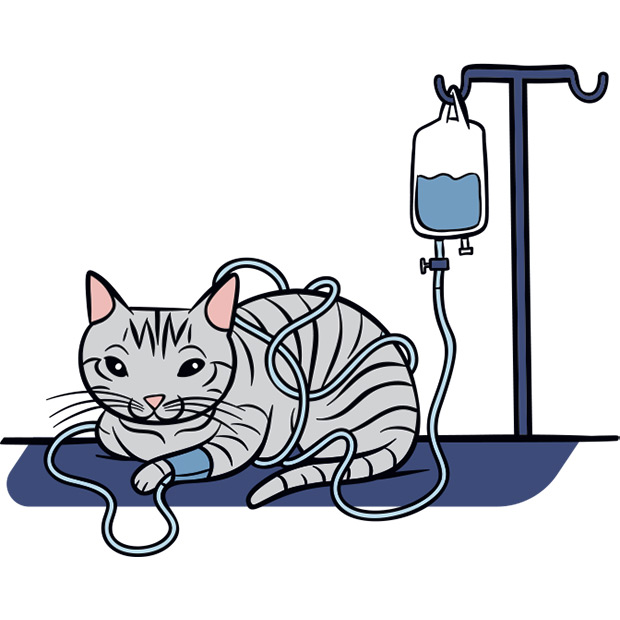
Skip to main content
Fluid therapy is a mainstay of veterinary practice, from prescribing subcutaneous fluids for the feline chronic kidney disease patient to treating the Addisonian dog in crisis.
The 2024 American Animal Hospital Association (AAHA) Fluid Therapy Guidelines, released June 7, have answers for which type of fluids to select, how much to administer, and for how long in various situations.
The association says the guidelines not only provide a detailed refresher on the basic principles of fluid therapy, but they also guide the busy practitioner through a variety of common scenarios where fluids are used—from anesthesia, to resuscitation, to treatment of the sick patient.
The guidelines offer an overview of the body’s fluid dynamics and provide practical recommendations for selecting fluids, calculating administration rates, and choosing administration routes in dogs and cats for the purposes of resuscitation, rehydration, and maintenance.
The document also covers fluid therapy recommendations for anesthetized patients, patients with common conditions, and those with disorders presenting special fluid therapy challenges. Additionally, the guidelines detail patient monitoring parameters, highlight methods to prevent fluid overload, describe fluid delivery options, and address controversies and misconceptions in fluid therapy.
The top three takeaways on general fluid therapy principles, according to AAHA, are as follows:
- Fluids are drugs and must be prescribed accordingly to achieve the desired therapeutic goals promptly and minimize complications.
- Each body fluid compartment—intracellular, interstitial, and intravascular—may require a different fluid prescription tailored to a patient’s individual needs.
- Arbitrarily assigning a fluid rate or dose can contribute to patient morbidity and mortality and lead to missed fluid therapy goals.
“Fluids are drugs that are prescribed to patients, and like any medication, they must be used in a way that achieves therapeutic goals and minimizes complications” is the takeaway emphasized in a graphic that summarizes the guidelines at a glance.
Other online resources include case examples, answers to frequently asked questions, a poster, and video.
Related content
This post was originally published on this site be sure to check out more of their content.












































